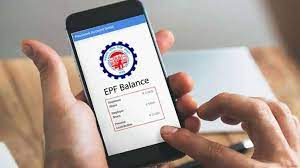In the Provident Fund (PF) framework, NCP days are a significant aspect to understand. NCP, an abbreviation for Non-Contributory Paydays, is when an employee is absent from work and receives no salary. This lack of earnings and subsequent absence of contribution to his or her provident fund is why they are termed “non-contributory” days.
Read More:- Payroll Data: EPFO adds 15.62 lakh net members in December 2023
Amjad Khan, Executive Director – employee benefits practice at Anand Rathi Insurance Brokers, said, “In the NCP, the PF will not be debited into the employee’s PF account. These are those days when the employee was off from any wages or monthly income. Any leaves taken by an employee like CL, PL, ML or even maternity leave are not counted as a part of the NCP period as the employee is entitled to such leave.”
The PF is a government-regulated, retirement savings scheme where both the employer and the employee contribute a certain percentage of the employee’s basic salary every month. NCP days may affect the overall accumulative amount in an employee’s provident fund account, as no contribution is made during these periods.
Read More: EPF: Do You Have Two Universal Account Numbers; Learn Steps To Merge Them
Calculating NCP days involves the simple process of tracking the precise number of days an employee is absent from work and not earning wages. You must keep a note of these days. It is typically done by the HR department. This helps you accurately calculate the contribution to the provident fund.
To view how many days you worked, visit the EPFO member passbook website and check the number of days you have been employed and how many days you came under NCP. You can log in with your UAN number and password.
Read More: EPFO Introduces Digital Process For Contributions Beyond Statutory Limit – Details
“NCP period can be counted for situations like going on leave with prior official approval, absent/absconding from office or leaves taken beyond the defined maternity leave in an organisation,” said Khan.
Generally, an employee’s attendance register or the HR management system records instances of leave without pay, authorised or unauthorised absences or even periods of strike. These are all classified as NCP days. Any period during which an employee does not earn income – whether it is a single day or an extended leave – requires documentation.
Read More: How To Activate UAN: All You Need To Know
This way, understanding the concept of NCP days and accurately calculating them is imperative for both the employee and employer in relation to the Provident Fund. Regular and accurate tallying of such days can ensure the correct calculations of contributions, ultimately leading to a smoother operation of the Provident Fund scheme.





































